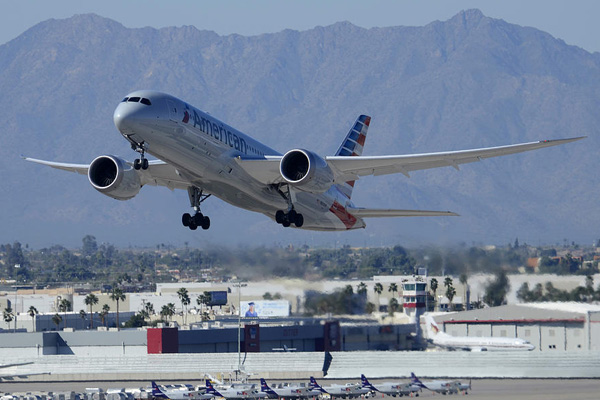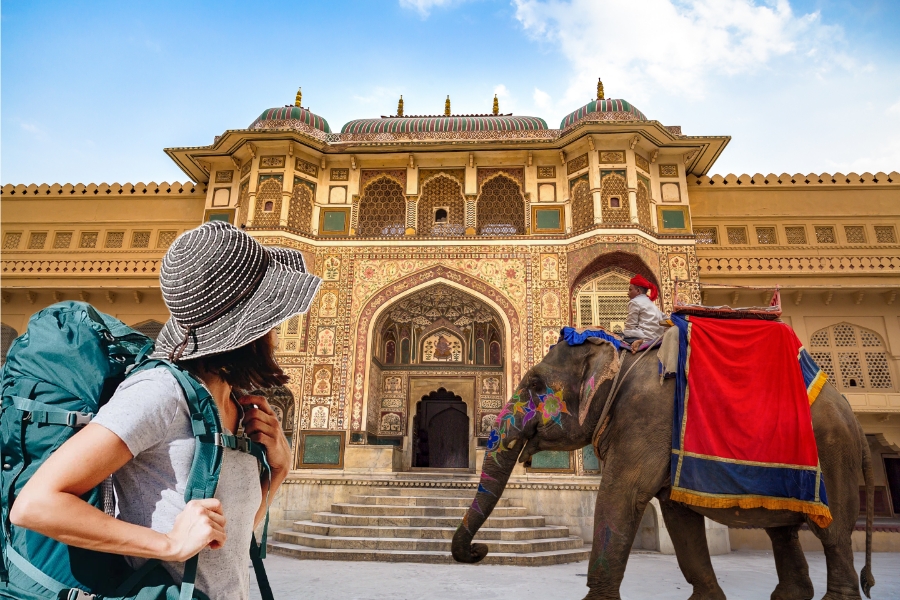Mega aviation alliances have made 7th freedom redundant
Pran Dasan, Director, Commercial Operations South East Asia, flydubai, opines that adopting the 7th freedom of air on the lines of China (for its Hainan port) will pose a threat to Indian air carriers due to the entry of foreign competition on routes where they have no justification to be in. Moreover, with mega air alliances – Star Alliance, SkyTeam and OneWorld operating flights all over the globe, 7th freedom has become irrelevant.

IBT: China has recently decided to offer 7th freedom of the air on a trial basis at the Hainan Free Trade Port. Which other countries have offered this level of agreement and how does it impact their aviation industry?
Pran Dasan: See, first of all what you should know about freedom of the air is that there are 5 original freedoms recognized by ICAO and the rest of them are all add-on freedoms that were formulated later to meet the developing market and industry situations. If we were to study the air transport industry post World War 2, when mass travel began in the 1950s-60s or even the late 1980s-90s flights between major global cities were never non-stop. They involved multiple stops en route. For example, India & UK, where a typical route from Bombay would see the flight do Bombay-Delhi-Beirut-Geneva-London. At that time, considering those conditions, the freedoms of air were very important, especially the 5th freedom.
Now that aircrafts are capable of non-stop flights over long distances and passengers prefer to travel non-stop, 3rd, 4th and 6th freedoms are predominant while the others have diminished in relevance. One freedom which is almost insignificant today is the 7th freedom outside of markets like the EU. 7th freedom permits the airlines of a certain country, say country A to operate its airline between two other countries, say countries B and C without connecting it to a service originating in A. There are a few conditions for this to happen successfully.
(i) The countries must either be extremely developed with a stable economy. These countries must be comfortable with the fact that an airline owned by a foreign state will be in standalone operations between their country and another without any connecting service to the country that owns the airline. EU is the best example for this type of arrangement. For example, Ryanair, an Ireland registered airline flies between the UK and other European countries.
(ii) The other possibility is if the country is extremely backward or poor, without a proper airline. Countries at this end of the spectrum, such as some African countries often avail the 7th, 8th and 9th freedoms. These countries rely on foreign airlines for their domestic and international travel.
Even though China has announced that it will be implementing the 7th freedom at Hainan, it will be very difficult to carry it out. If I were to give an example, according to the new policy announced by China enabling 7th freedom, Air India will be allowed to make flights from Hainan to New York on a regular basis. This is unsuitable for China and the US. They will hesitate to hand over their business to a third country’s airline and increase competition. Even if China agrees to this, the US might not. The aviation industry operates on very narrow margins of profitability. So, to introduce more competition on such routes is not favourable at all.
Likewise, another example of the futility of the 7th freedom can be found in the very busy India-UAE air route. If these rights are given to airlines neither belonging to UAE nor India, the airlines of these two countries will object since the entry of competition would be a threat to their business. Even if India were to allow Chinese airlines to carry passengers between Mumbai and Dubai, the UAE would immediately object to it as it will be harmful for their business.
Moreover, the 7th freedom was created at a time when there were almost no airline alliances. Today, we have code share and alliances between the major airlines. For instance, if a person is travelling from Guwahati to Denver in the US by Lufthansa, the person might be travelling by Air India or Vistara for the first leg of the journey from Guwahati to Delhi, with a shared code shared service operated by the partner airline, while the flight number on the ticket is that of Lufthansa. This concept of codesharing somewhat equates to 9th freedom, which allows for an international airline to operate a standalone domestic service in a country without linking it to a service originating or terminating in their home country.
So, coming back, there is no need for the 7th freedom essentially. Or, if we were to take an example of a flight which travels between Hainan and New York, that flight might have an Air India flight number while being operated by China Southern Airlines with whom Air India may have a codeshare arrangement. The revenue is shared by both the airlines. This makes the 7th and 8th freedom redundant, especially due to the presence of three major airline alliances – Star Alliance, SkyTeam and OneWorld. These three alliances operate flights all over the globe, so 7th freedom becomes irrelevant.
IBT: Where does India stand in terms of freedom of the air rights to its key trading partners? To what extent has India been able to leverage existing freedom of the air agreements with other countries?
Pran Dasan: First we must understand how international aviation works. There is something called an Air Service Agreement signed between major countries. This agreement gets updated every few years and a fresh Memorandum of Understanding is signed, depending on the needs of the countries. It gives all the signing parties equal opportunities. For instance, when the original Air Services Agreement was signed between, say for example, India and the United Kingdom, this was done based on an estimated market demand between the two countries at the time of signing (late 1940s).
As an example, let us consider that number to be 2,000 passengers per week in each direction, so 1,000 seats each were assigned to airlines on both Indian and British sides. If the number of fliers increased after 2 years to 6,000, then a new bilateral meeting would be held and a new MoU signed; increasing the capacity for each side to 3,000 seats per week in each direction. This is the basis on which air traffic rights are controlled between India and foreign states.
IBT: Given the current diplomatic relations and politico-military realities that India has with some of its neighbours, do you think that India will ever be able to embrace an open skies policy? If not, which are some of the other countries with which India can explore this proposal?
Pran Dasan: The latest Civil Aviation Policy of the Government stipulates that all countries that are beyond 5,000 km from Delhi will be considered for open skies. But implementation is more complex. We do have an open skies agreement with the US. We also have this agreement with the SAARC countries and a limited open sky policy with ASEAN countries restricted to 18 airports in India. This means that an ASEAN carrier like Malindo can fly from Kuala Lumpur to any of these 18 secondary cities (eg. Trichy, Bhubaneshwar etc. with an unlimited number of services). However the same airline cannot fly unlimited services to Mumbai or Delhi since these cities are outside the ambit of this limited open sky policy.
In a classic example of 5th freedom, India was permitted by the UK and US to have its designated airline to operate between London and New York as an extension of the service originating in India while uplifting revenue passengers in London bound for New York and vice-versa. This way, Air India was allowed to compete for London-NYC and vice versa traffic along with airlines from the UK and US, despite being the airline of a 3rd country. This arrangement is known as 5th freedom where the service originated in the home country but was allowed to pick up passengers between intermediate points in two other countries enroute to final destination.
In the past decade as more longer range aircraft become commonplace, such flights lost their popularity and were discontinued.
6th freedom is the most prevalent form as on date. 6th freedom is a combination of 3rd and 4th freedoms. A good example of this would be Emirates operating to India. For instance, Emirates passengers travelling from Delhi to New York via Dubai, fly from Delhi to Dubai on flight number EK514. Then they are connected to New York on flight number EK401. So, as it is operating from India to Dubai, it is exercising its 4th freedom. 4th freedom is the right of an airline to bring passengers from a foreign country to their home country. Again, as it travels from Dubai to the US, it exercises its 3rd Freedom, which is the right of a carrier to carry passengers from its own country to a foreign country. These two freedoms combined constitute 6th freedom. When thousands of passengers choose to fly with Emirates, Lufthansa, Air France etc. they are not just travelling to the home countries of these airlines but are going further.
Almost 80% of the travellers go beyond Dubai, Germany, or France. This is how the 6th freedom is exercised. This is how most of the people fly nowadays. People don’t necessarily choose the airline of the country they are originating in or travelling to, but could opt for any other 3rd country airline, triggering 6th freedom traffic.
IBT: What role can establishing bilateral travel bubbles have on spurring the post-COVIDrecovery of the country’s aviation sector? What obstacles could these pacts face?
Pran Dasan: A bilateral travel bubble is a special mutually agreed set of rules agreed upon by the aeronautical authorities of two countries governing air travel between them, during this exceptional time of COVID-19. They may choose to have specific requirements such as a limit on number of flights between each side, the procedures will be pre-defined eg. state approvals from different destination states in India where the flight arrives into must be taken, COVID-negative certificates may be mandated etc. These are however temporary in nature and the world will revert to the normal system of bilateral air services agreement terms and conditions once the situation normalizes.
Such air travel bubbles depend upon a country’s travel regulations. For instance, EU recently announced that they will only allow tourists from 14 countries. India, US, UAE, and several others are not a part of the list. Hence under these circumstances existing bilateral traffic rights are limited to carrying only those categories of passengers who the destination country will accept.
IBT: Recently, the US has accused India of distorting the level playing field by allowing Air India to fly commercial passengers on outbound legs of repatriation flights. It claims that the Indian government has prevented US carriers from conducting India-US passenger charter operations involving direct sales to individual passengers or through other distribution systems. What is your take on this matter?
Pran Dasan: Freedoms of the air and bilateral agreements get suspended during an emergency, like we have now. Very often, countries must operate their flight services and bring back their citizens who are stranded in a foreign country, free of cost. That is what happened with Indians stuck in China. However, while bringing back people from the US, the passengers bought individual tickets on Air India flights making it a commercial operation. This was what US objected to. Fortunately, both nations have meantime ironed out these differences and are currently operating on a mutually agreed formula
Pran Dasan is the Director, Commercial Operations Southeast Asia, flydubai. He has a rich experience of over 30 years in the aviation industry that includes long stints with Lufthansa and Kuwait Airways in leadership positions in the Indian Subcontinent. He is also a member of the Aeronautical Society of India. He holds a MSc degree in Air Transport Management from City University, London.













Leave a comment